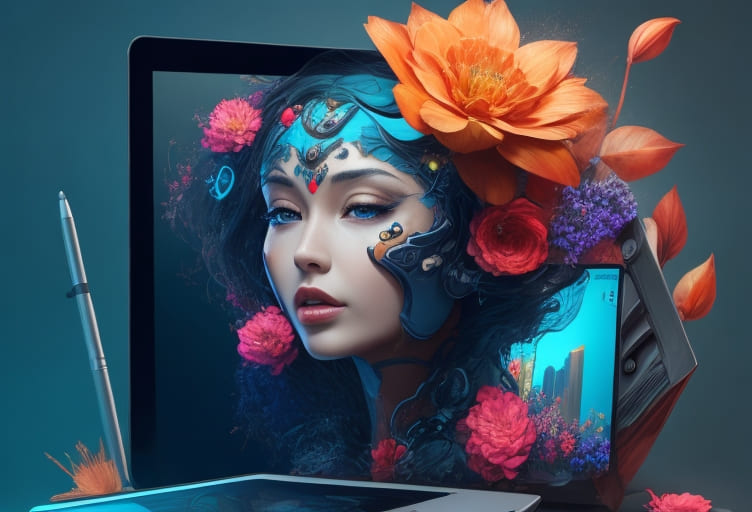Digital Art vs. Traditional Crafts

The digital age has brought with it a revolution in the way art is created and appreciated. With the rise of digital art comes a frequent comparison with traditional crafts. In this article, we will explore the differences and similarities between digital art and traditional crafts, examining how these two forms of artistic expression coexist in the contemporary world.
Digital Art: Innovation and Versatility
The virtual world of possibilities
Digital art is characterized by the creation of works of art using digital tools and techniques, often with the assistance of graphic design software and electronic devices such as tablets and computers. One of the biggest advantages of digital art is its versatility. Digital artists can explore a wide range of styles, from hyperrealistic illustrations to digital abstractions and conceptual art.
Traditional Crafts: Skill and Authenticity
The human touch and cultural connection
Traditional crafts, on the other hand, involve creating objects by hand, often using traditional techniques and materials passed down through generations. This art form values the craftsman's manual skill and often carries with it a deep cultural and historical connection. Traditional crafts include weaving, ceramics, jewelry, carpentry, among many other crafts.
The Evolution of Digital Art and its Influence on Crafts
The fusion of distinct worlds
With the advancement of technology, digital art began to influence traditional crafts. Some artisans incorporate digital elements into their creations, such as using 3D printers to create unique pieces or developing digital patterns for weaving. This fusion of distinct worlds opens up new creative possibilities and challenges the traditional idea of art versus technology.
The Tactile Experience vs. Virtual Reality
From human touch to immersive experience
One of the most striking differences between digital art and traditional crafts is the physical experience. Traditional crafts offer a tactile connection, allowing people to see, touch and feel the work of art. On the other hand, digital art is often enjoyed on digital screens, where the experience is visual and virtual. However, virtual reality is changing this paradigm by introducing tactile elements into digital works of art.
Accessibility and Democratization of Art
Art for everyone
Digital art has brought with it greater accessibility to artistic creation. Costs associated with purchasing physical materials are eliminated, making artistic practice more accessible to a wider audience. Furthermore, the internet allows digital artists to instantly share their work with a global audience, democratizing art and expanding its reach.
Conclusion: A World Where Both Art Forms Thrive
Celebrating creative diversity
While digital art and traditional crafts represent distinct approaches to artistic creation, they both have an important place in the contemporary world. Digital art drives innovation and exploration of new creative frontiers, while traditional crafts preserve the history and authenticity of local cultures.
The true richness of art lies in its diversity and ability to evolve over time. Instead of seeing digital art and traditional crafts as competitors, we can appreciate each other's unique contributions to the global art scene. Both forms of artistic expression thrive and coexist, enriching our cultural experience and celebrating the richness of human creativity.

